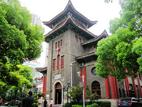In the 19th century of the Chinese Christian history, there was a debate between the evangelization method adopted by Hudson Taylor and the missionary route led by Timothy Richard. The "Hudson Taylor" missionary route focused on evangelizing the poor and working people, socializing with economic bottom of the society, simply and directly spreading the gospel to the most underprivileged people. On the contrary, the " Timothy Richard" approach emphasized spreading the gospel to the upper class of society, socializing with the elites, and working a great deal on the cultural level.
After a long period of practice, the evangelism methodology led by Hudson Taylor gained more consensus by the Chinese church. Moreover, we also have seen that during stormy historical times, the churches and believers who followed the "Taylor" method persevered despite the hardships, such as the Cultural Revolution and many other tests. At the same time, in recent years, more and more people and scholars in Christian circles have been aware of the contributions to modern China made by the early missionaries who once adhered to the "Timothy" method. Therefore, some church history researchers have also proposed that for the Chinese church, the Hudson and Timothy methods complemented each other and were both important.
A few days ago, L (pseudonym), a pastor who has been pastoring and engaged in theological education for many years in East China, shared his insights about the above debate. He believed that in the current era, the evangelism ministry should target more the common people, which might be an important path for the localization and sinicization of Christianity today.
L believed that the reason for emphasizing targeting common people was that compared with Chinese society more than 200 years ago, the underclass and the elite were not the main social groups, but the common people. With the development of society, more and more common groups had the ability to think independently. How to attract them was a challenge to the current Chinese church.
Rethinking the original two mission approaches
He mentioned that in their times Timothy Richard, William Alexander Parsons Martin and others had tried to work with high-level people to change China, that is, trying to change China by transforming the upper-class people in Chinese society at that time. But in the end, judged by the results, it could be concluded as a failure. Timothy Richard and some others had a good relationship with high-ranking people such as the Empress Dowager Cixi, whom they rarely criticized. Another example was the Hundred Days Reform, also called Wuxu Reform, in which many missionaries were also involved. In addition, the missionaries who followed this method had also established many hospitals, orphanages, museums, etc. in China. It was especially remarkable that they recognized the importance of education, for which they established many church universities and even a larger number of ordinary schools, such as elementary schools and middle schools. Unfortunately, when the social situation changed, all these institutions virtually disappeared.
"Yet, we need to know that there will never be a perfect method." He reminded, "While we are affirming the excellent work administered by Hudson Taylor and the China Inland Mission, we also need to objectively evaluate and acknowledge the shortcomings of this method. Because the literacy level of the Chinese people at that time was generally very low, especially following this method, the target group was the lower class, resulting in believers having an extremely low level of knowledge. After the May Fourth Movement, the Anti-Christian Movement began to rise. Sadly, at that time few people from the Chinese Christian community had responded. It would be fair to say that they were completely powerless in front of the challenge of the Anti-Christian Movement."
"Besides, these believers were prone to join all kinds of heresies due to a serious lack of cultural and social common sense. In fact, even today in the 21st century, this is still the case." L has experienced this in person. In the past few decades, he has served in rural churches many times, and often witnessed that believers there often had "no knowledge but only passion" because they lacked basic education in Christian faith and theology.
L believed that China should not follow the top-down elite method advocated by Timothy Richard, or the impoverished grassroots peasants method led by Hudson Taylor, but the populace method or the common people method.
On the other hand, "Nowadays, knowing how to make the Christian faith take root in people's hearts is challenging." L found that with the development of economy and society, there were more and more insightful people. "Converting these people into Christians is very difficult. They are very thoughtful and have developed strong independent thinking, however, the church cannot attract them. Neither preaching, nor pastoring, nor the church life of traditional church are attractive to them.”
"Under such circumstances, more new churches need to be established, which can well attract and unite these people who are aspiring and able to think independently."
L finally said, "After years of observation and thinking, I have come to the conclusion that we still need to take the common people method, which, in my opinion, may be a way of sinicizing and localizing Christianity in this era. "
- Translated by Shuya Wang












